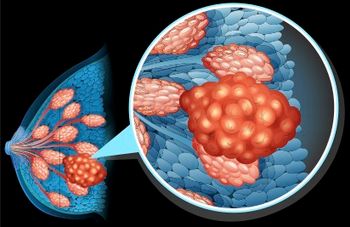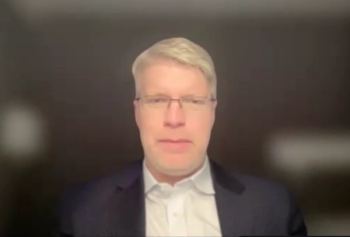
Optimizing Novel Treatment Options in Relapsed/Refractory Multiple Myeloma
Noa Biran, MD, speaks about recently approved bispecific therapies and current trials that may impact the standard of care in relapsed/refractory multiple myeloma.
Noa Biran, MD, spoke about advancements in available treatment options for those with relapsed/refractory multiple myeloma and maintaining patient well-being during an OncView® hosted by CancerNetwork®. She touched on topics like recently approved bispecific therapies and current trials that may impact the standard of care.
Biran, a physician specializing in the management of multiple myeloma and plasma cell dyscrasias, as well as an associate professor of Medicine at Hackensack Meridian School of Medicine at John Theurer Cancer Center, also focused on sequencing newly approved therapies and managing physical and emotional adverse effects (AEs) observed during treatment.
Toxicity Associated With Newly Approved Bispecific Agents
Biran first detailed the safety profiles of bispecific T cell–engaging agents that have received approval from the FDA as treatment options for patients with relapsed/refractory multiple myeloma. Newly approved agents of interest included talquetamab-tgvs (Talvey),1 teclistamab-cqyv (Tecvayli),2 and elranatamab-bcmm (Elrexfio).3
“These have remarkable activity as single agents and have certainly changed the bar for rates of response in patients who are triple-refractory or even penta-refractory, with single-agent response rates greater than 60%,” Biran said. “They are excellent therapeutic choices.”
Concerning the BCMA-directed antibodies, teclistamab and elranatamab, Biran highlighted the possibility of significant and prolonged infections due to persistent lymphodepletion associated with the agents. According to data from the phase 1/2 MajesTec-1 trial (NCT03145181; NCT04557098), which supported the approval of teclistamab, 76.4% of patients who were treated with the agent experienced any-grade infections, and 44.8% had grade 3/4 infections.4
Additionally, findings from the phase 2 MagnetisMM-3 trial (NCT04649359) highlighted that 69.9% of patients who were treated with elranatamab had infections, 39.8% experienced grade 3/4 events, and 6.5% died due to infections.5 When weighing the risk/benefit profile of the BCMA-targeting antibodies, Biran stated that she tends to employ these agents in later lines of therapy in her practice.
Biran also discussed common toxicities associated with the GPRC5D-targetting talquetamab, which includes dysgeusia, skin changes, and weight loss. Prior reports from the phase 1/2 MonumenTAL-1 trial (NCT03399799; NCT04634552) indicated that the most common any-grade toxicities in patients who received talquetamab at 0.4 mg/kg included cytokine release syndrome (CRS; 79.0%) and skin-related AEs (55.9%); grade 3/4 toxicities in this cohort included fatigue (3.5%) and pyrexia (2.8%).6 Moreover, common any-grade AEs in patients who received the agent at 0.8 mg/kg included CRS (72.4%), skin AEs (67.6%), and dysgeusia (46.2%); with grade 3/4 toxicities including rash (5.5%) and dysphagia (2.1%).
The risks of the aforementioned AEs must be weighed against the efficacy of talquetamab, Biran said. Just as she does with the BCMA-targeting agents, she stated that she usually administers talquetamab to patients who have later relapses or those with 4 prior lines of treatment.
Biran also said that it was crucial to evaluate the use of these agents, especially the BCMA-directed antibodies, in the context of chimeric antigen receptor (CAR) T-cell therapy.
“We know that the efficacy of CAR T cells is reduced for patients who have already had B-cell maturation antigen [BCMA]-directed therapies, so I tend not to use the BCMA bispecific T cell-engagers in patients whom I am hoping to treat with a CAR T-cell therapy,” Biran said.
Selinexor Mechanism of Action and Novel Combinations
Next, Biran spoke about the potential role that selinexor (Xpovio) may play in the management of relapsed/refractory multiple myeloma. Selinexor works by targeting XP01, which she described as a “favorable” target because it is often upregulated in those who have aggressive or advanced multiple myeloma. The agent transports tumor suppressor genes from within the nucleus to the cytoplasm of the cancer cell, causing said genes to accumulate and subsequently yield apoptosis.
Selinexor appears to synergize well with other approved drug classes involved in protein transport and production in malignant plasma cells; these include proteasome inhibitors and monoclonal antibodies. Additionally, Biran said that selinexor may limit off-target toxicities observed in other agents due to its targeting of a single protein.
“Mechanistically, it’s very exciting to see how [selinexor] would work either just prior to or just after CAR T-cell therapy; that would be interesting to study,” Biran said. “It would be very interesting to see how that would affect the efficacy of the CAR T cell or potentially prolong its durability.”
Biran said patients who are candidates for CAR T-cell therapy and do not have rapidly progressive disease may be suitable to receive selinexor in combination with agents including carfilzomib (Kyprolis), daratumumab (Darzalex), or pomalidomide (Pomalyst).
In a phase 1b/2 study (NCT02343042), investigators assessed the preliminary efficacy and safety of selinexor in combination with daratumumab and dexamethasone in a cohort of 34 patients who received 3 or more prior lines of therapy for relapsed/refractory multiple myeloma.7 The overall response rate (ORR) with the regimen was 73% among 30 patients who received no prior treatment with daratumumab. Additionally, the median progression-free survival (PFS) was 12.5 months.
Additionally, investigators of a phase 1b study (NCT02199665) evaluated selinexor plus carfilzomib and dexamethasone for those with relapsed/refractory multiple myeloma.8 Among 30 evaluable patients, the study treatment produced an ORR of 70% (95% CI, 51%-85%), which included partial responses (PRs) in 43%, very good PRs in 20%, and stringent complete responses in 7%. The ORR was 65% (n = 17/26) and 86% (n = 12/14) among patients with triple-class exposed and penta-exposed disease, respectively.
Biran also highlighted that treatment with selinexor may provide a favorable toxicity profile in earlier lines of therapy compared with bispecific T-cell–engaging drugs.
“One of the biggest benefits of selinexor compared with other novel therapies is that we don’t see profound immunosuppression as we do with many of the bispecific T-cell engagers,” she said. “That supports its use in the earlier lines of treatment. In those lines, you cannot justify an infection-related death in a patient with myeloma.”
Improving Quality of Life in Later Lines of Treatment
When assessing treatment for later lines of therapy for relapsed/refractory multiple myeloma, Biran emphasized not only the physical AEs associated with treatment but also the emotional fatigue of frequent office visits for patients. To address this treatment burden moving forward, she stated that fixed-duration therapy may become more commonplace following the advent of CAR T-cell therapies and bispecific T-cell antibodies, which appear to yield deep, enduring remissions even following treatment discontinuation.
Additionally, Biran suggested that clinicians should focus on adjusting how they approach maintenance therapy. Following autologous stem cell transplantation, she emphasized harnessing a patient’s recovering immune system with treatment options including fixed-dose selinexor in combination with an immune checkpoint inhibitor or consolidation with CAR T-cell therapy.
“It’s going to be important to choose that therapy after the transplant wisely in a way that we can harness immune activity and change the immunophenotype to a more favorable one,” Biran said. “Moving forward, we’re going to see CAR T cells earlier and fixed-duration therapy; we’re going to start to get rid of lenalidomide [Revlimid] maintenance and use our therapies in a more robust but finite fashion to help give our patients quality of life [QOL] and a long life.”
Biran concluded the discussion by stating that practices must use these novel agents wisely and sequentially and quickly refer patients for CAR T-cell and transplant evaluations. Moreover, she recommended proactively vaccinating patients and giving antiviral prophylaxis to mitigate the risk of immunosuppression, thereby benefitting their QOL.
References
- U.S. FDA approved TALVEY (talquetamab-tgvs), a first-in-class bispecific therapy for the treatment of patients with heavily pretreated multiple myeloma. News release. The Janssen Pharmaceuticals. August 10, 2023. Accessed February 20, 2024. https://prn.to/3KwnjyD
- FDA approved teclistamab-cqvy for relapsed or refractory multiple myeloma. News Release. FDA. October 25, 2022. Accessed February 20, 2024. https://bit.ly/3Fgsi4s
- Pfizer’s Elrexfio receives U.S. FDA accelerated approval for relapsed or refractory multiple myeloma. News release. Pfizer. August 14, 2023. Accessed February 20, 2024. https://bit.ly/3DTCRIY
- Moreau P, Garfall AL, van de Donk NWCJ, et al. Teclistamab in relapsed or refractory multiple myeloma. N Engl J Med. 2022;387(6):495-505. doi:10.1056/NEJMoa2203478
- Lesokhin AM, Tomasson MH, Arnulf B, et al. Elranatamab in relapsed or refractory multiple myeloma: phase 2 MagnetisMM-3 trial results. Nature Med. 2023;29:2259-2267. doi:10.1038/s41591-023-02528-9
- Chari A, Touzeau C, Schinke C, et al. Talquetamab, a G protein-coupled receptor family C group 5 member D x CD3 bispecific antibody, in patients with relapsed/refractory multiple myeloma (RRMM): phase 1/2 results from MonumenTAL-1. Blood. 2022;140(suppl 1):384-387. doi.10.1182/blood-2022-159707
- Gasparetto C, Lentzsch S, Schiller GJ, et al. Selinexor, daratumumab, and dexamethasone in patients with relapsed/refractory multiple myeloma (MM). J Clin Oncol. Published online May 25, 2020. doi:10.1200/JCO.2020.38.15_suppl.851
- Derman BA, Chari A, Zonder J, et al. A phase I study of selinexor combined with weekly carfilzomib and dexamethasone in relapsed/refractory multiple myeloma. Eur J Haematol. 2023;110(5):564-570. doi:10.1111/ejh.13937
Newsletter
Stay up to date on recent advances in the multidisciplinary approach to cancer.



















































































